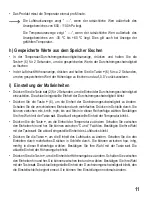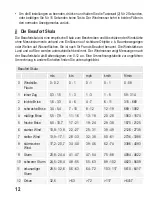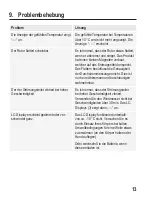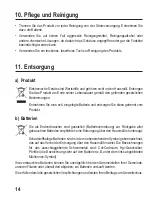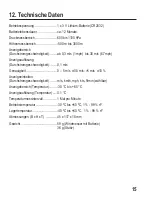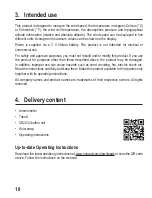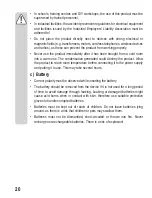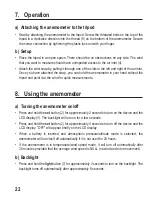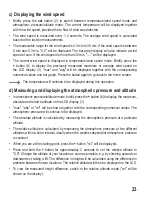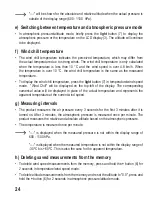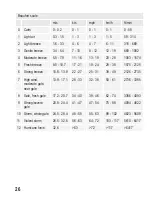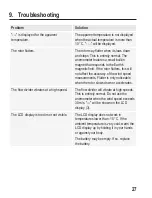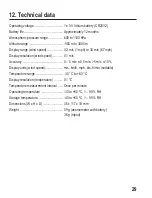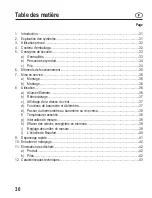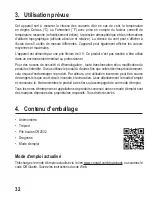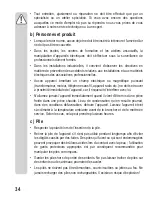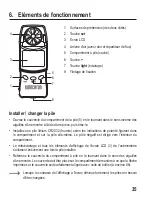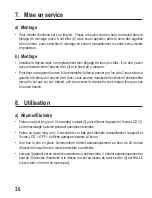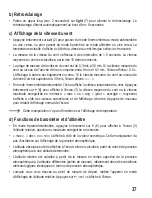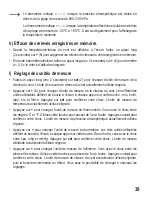
i) Setting the units
• To set the wind speed unit, press the set button (2) for 2 seconds. The current wind speed
unit will flash on the display.
• Press the + button (6) to change the wind speed unit. Move through the different units in
a loop by pressing the button repeatedly. You can choose from m/s, km/h, mph, kts and
ft/min in this order. Confirm your selection with the set button. The current temperature unit
will flash on the display.
• Press the + button to change the temperature unit. You can choose from °C and °F. Confirm
your selection with the set button. The current atmospheric pressure unit will flash on the
display.
• Press the + button to change the pressure unit. Move through the different units in a loop
by pressing the button repeatedly. You can choose from hpa, inhg and mmHg in this order.
Confirm your selection with the set button. The current altitude unit will flash on the display.
• Press the + button to change the altitude unit. You can choose from feet and metres. Confirm
your selection with the set button. The current wind speed unit will flash on the display. If
necessary, you can change the settings again.
• To apply the settings, press and hold the set button (2) for 2 seconds. The settings will be
automatically applied if no buttons are pressed for 15 seconds. The anemometer will then
revert to the normal display.
j) The Beaufort scale
The Beaufort scale is an empirical scale for estimating the wind speed without using measuring
instruments. It works by relating wind speed to observed conditions on sea or land, such as
the movement of trees or waves on the surface of the ocean. It was named after Sir Francis
Beaufort. The wind speed on land and sea is calculated in different ways. The anemometer
displays measurements on the Beaufort scale from 0-12 using a bar graph. The table below
provides an approximate conversion of Beaufort measurements into different units.
25

